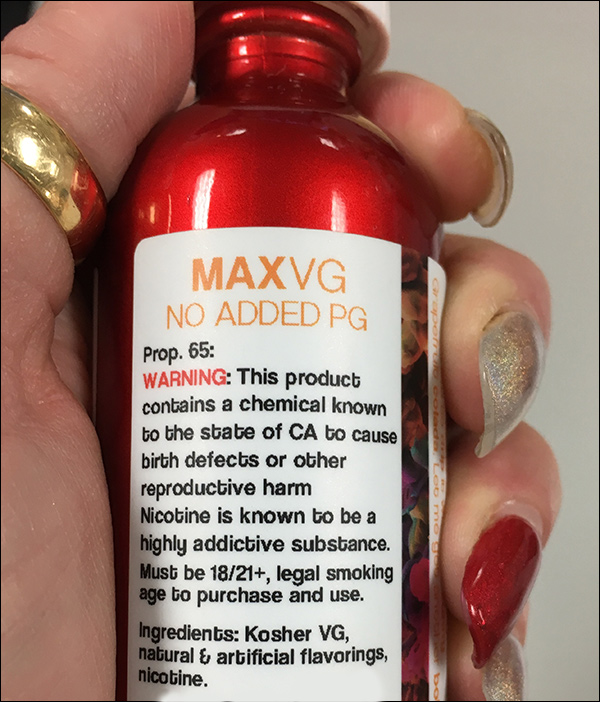By Dr. Sudip Bose, MD, FACEP, FAAEM
It is well known that cigarette smoking is dangerous to one’s health and to the health of others. For some, using e-cigarettes or “vapes” has allowed them to reduce or quit the use of tobacco. I applaud those who have been able to quit smoking by using these devices. It is a step in the right direction. However, as a practicing emergency room physician, I still have some concerns about the safety of these devices. As a friend who vapes once directly, albeit somewhat inelegantly, put it, “Only a moron would believe that inhaling [stuff] into your lungs is totally harmless.”
For the sake of this article, I will use the general term ENDS (electronic nicotine delivery systems), though I acknowledge that not all e-liquids contain nicotine. This is not an attack on people who use the devices or even sell them, but simply an attempt to educate Americans on the possible risks associated with their use. For the record: I absolutely am not incentivized by any pharmaceutical companies, government agency, political organizations or anyone else.
The Royal College of Physicians published research in the Annals of Internal Medicine and actually encouraged the use of ENDS. That may be misleading, however, because the study didn’t show that vaporizers and e-cigarettes are safe, but rather that their use is safer than smoking tobacco cigarettes. It is encouraging to note, however, that they do not think vaping is a gateway to cigarette smoking. This is especially important because of the popularity of ENDS use among younger people.
My primary concern remains the long-term health effects of using these devices and inhaling the vapor they produce, as well as nicotine dependence. While there are different types of devices and liquids used with them, they all contain chemicals that may affect the body over time. Even chemicals considered safe in foods may be harmful when heated, such as done by the coils in an ENDS device. For example, glycerin (the main ingredient in most vapor liquids) produces formaldehyde when exposed to a high-temperature heat source. Since the wattage and voltage of ENDS are often controlled by the consumer, the exposure risk cannot be ignored. Even the flavoring and coloring found in e-liquids – which have been deemed safe for foods – may be harmful when vaporized. The Royal College of Physicians reports, “… The possibility of some harm from long-term e-cigarette use cannot be dismissed due to inhalation of the ingredients other than nicotine.” We do not know what we will learn about the effects of e-cigarettes and vaporizers in the decades to come. I urge people to recognize potential risks and make their own choices accordingly.
Nicotine remains one of the most addictive substances known to mankind. That is irrefutable. The link between crime and addiction to alcohol and drugs also is irrefutable. Every day in the emergency room, I see victims of assault propagated by drug and alcohol abuse. People who are prone to addiction may well start with vaping or e-cigarettes as they begin their journey along the harrowing road to alcohol and drug abuse. Some have argued that tobacco is what makes nicotine addictive; the opposite is true. As I’ve mentioned before, nicotine is a chemical in tobacco and is what makes cigarettes highly addictive. “Tobacco is an addictive substance, because it contains the chemical, nicotine. Like heroin or cocaine, nicotine changes the way your brain works and causes you to crave more and more nicotine.” Others have said that nicotine patches and gum are not addictive. Again, the opposite is true because the patches and gum contain nicotine, just like cigarettes. All that said, I do not think the DEA is going to break down your door and take away your vape, nor do I think they should.
From an objective clinical standpoint, I have seen both acute illnesses and serious injuries, which my patients themselves have related to use of ENDS. The most common complaints are shortness of breath, racing heart, dizziness, nausea, vomiting and, rarely, even seizures. These reactions are commonly associated with high levels of nicotine poisoning. Injuries have resulted from the batteries inside the ENDS exploding and causing severe burns, blindness, facial and dental injuries. I realize that in the emergency room we see extreme examples, but consumers need to be aware of potential dangers and use them with caution. This is particularly concerning with teenagers and young adults who may not be as safety conscious.
The Surgeon General warns that nicotine is especially harmful to young people because it can adversely affect brain development. Nicotine use during adolescence and young adulthood has been associated with decreased attention and working memory, as well as behavioral problems. A National Health Interview Survey in 2015 shows that use of e-cigarettes among Americans who never smoked is most common among young adults between the ages of 18 and 24. Parents need to ensure that if their children are vaping, the e-liquid being used is free of nicotine. The nicotine concerns along with potential for injuries mean parents need to be vigilant.
In the final analysis, I do suspect that using ENDS is better for your health than smoking cigarettes. Eliminating the tar, tobacco and myriad chemicals in cigarettes is a huge step in the right direction, as is reducing and hopefully eliminating nicotine, as some users have been able to do with e-cigarettes and vaporizers. If I had a friend using tobacco cigarettes who was unsuccessful in quitting cold turkey, I would be inclined to suggest using a vape as a tool to come off tobacco cigarettes and help kick the habit. The best option, though, is to quit altogether – or even better, never start.
To learn more about Dr. Sudip Bose, MD, please go to SudipBose.com and visit his nonprofit TheBattleContinues.org where 100% of donations go directly to injured veterans.
• EDITOR’S NOTE: Vaper April Washecheck contributed to this report.

